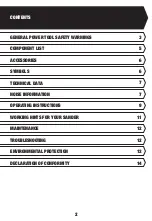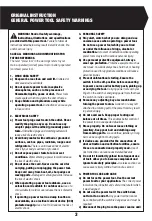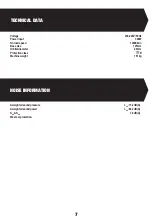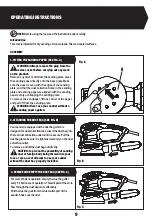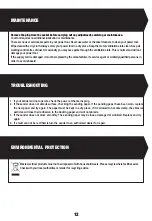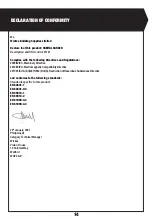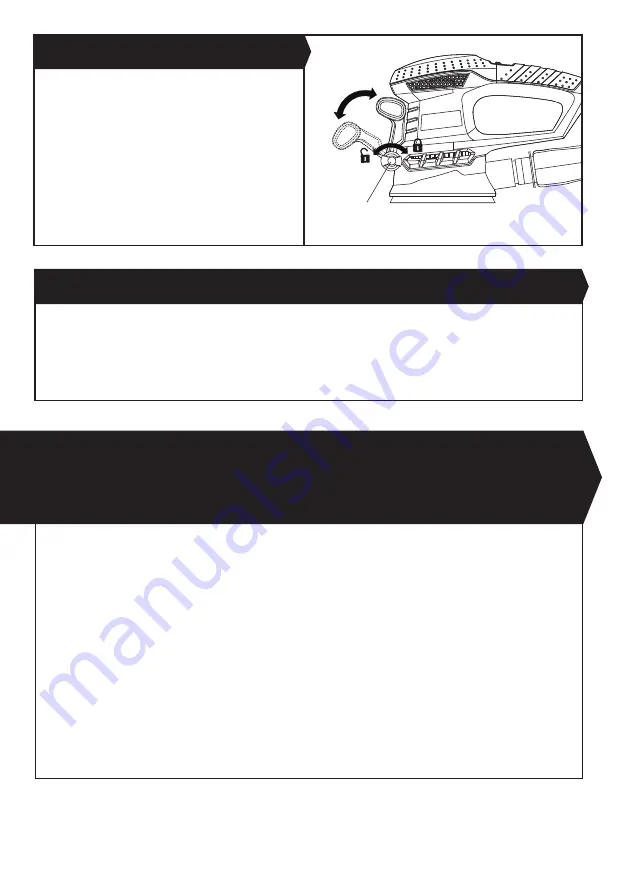
11
The workpiece to be sanded must be secured. If it is small or it may move during sanding, it must be held in a vice or
suitably clamped.
Be sure to hold the sander firmly whilst it is on and apply it gently to the work, it may “kick” on first contact. Hold the
sander so that it is flat on the work and move slowly, preferably with a smooth, circular motion. Regularly check the
condition of the sanding paper and replace when worn for best results.
3. USING THE SANDER
1. If your power tool becomes too hot, especially when used at low speed, set the speed to maximum and run it with no
load for 2-3 minutes to cool the motor. Avoid prolonged usage at very low speeds. Always use sanding paper that is
suitable for the material you want to sand.
2. Always ensure the work-piece is firmly held or clamped to prevent movement.
3. Any movement of the material may affect the quality of the sanding finish.
4. Start your sander before sanding and turn it off only after you stop sanding. For the best results, sand wood in the
direction of the grain.
5. Do not start sanding without having the sanding paper fitted.
6. Do not allow the sanding paper to wear away it will damage the base-plate. The guarantee does not cover base-plate
wear and tear.
7. Use coarse grit paper to sand rough surfaces, medium grit for smooth surfaces and fine grit for the final surfaces. If
necessary, first make a test run on scrap material.
8. Use only good quality sanding paper.
9. The sanding paper controls the sanding efficiency, not the amount of force you apply to the tool. Excessive force
will reduce the sanding efficiency and cause motor overload. Replacing the sanding paper regularly will maintain
optimum sanding efficiency.
WORKING HINTS FOR YOUR SANDER
1) Loosen the auxiliary handle lock knob (6) by turning it
counter-clockwise.
2) Rotate the auxiliary handle to a comfortable place.
3) Tighten the auxiliary handle locking knob by turning it
clockwise to lock the handle in place.
2. ADJUSTING THE AUXILIARY HANDLE (SEE FIG. F)
6
Fig. F
Summary of Contents for 223741
Page 1: ...PES300 223741 ORBITAL SANDER 300W...
Page 15: ...15...
Page 16: ...Customer Helpline 0345 2005409...


